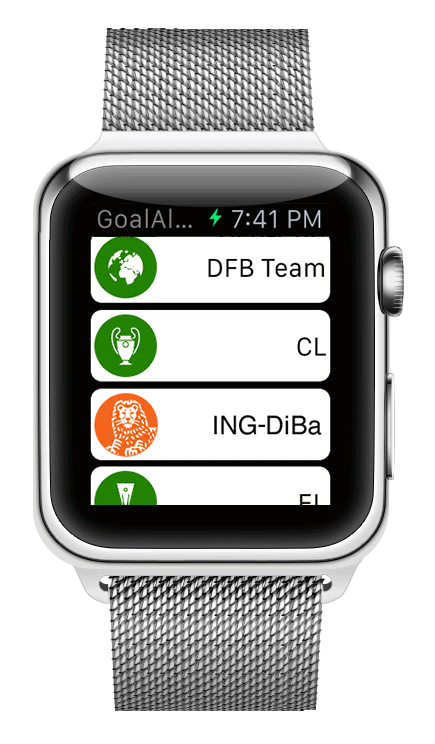 Advertisers are starting to wrap their minds around the wrist.
Advertisers are starting to wrap their minds around the wrist.
Frankfurt, Germany-based ING-DiBa – a digital-only offshoot of ING bank targeted at millennial consumers – has been working with mobile supply-side platform PubNative to test custom formats for the Apple Watch, which the SSP made generally available Wednesday.
But ING-DiBa is still squarely in the experimental phase.
“With growing numbers of visits from mobile devices, the Apple Watch could be an additional channel to reach prospects on a new screen and that’s most important for us,” said Helge Grubschat, a specialist in charge of new media at ING-DiBa, who noted that the bank is still figuring out where to position the watch within its overall advertising mix.
That said, ING-DiBa doesn’t have an exact read on how many of its more than 8 million customers own an Apple Watch, although “our expectation is that the Apple Watch will reach a relevant market penetration with some time,” Grubschat said.
Although Apple hasn’t released official stats on smartwatch sales, analysts have been pumping their own estimates into the void. Slice Intelligence, a digital commerce research company that tracks online order through email receipts, approximates that roughly 2.79 million Apple Watches have been sold in the US between April, when the watch was first available for pre-order online, and mid-June, when it finally hit retail locations. According to numbers from Apple analysis site Above Avalon cited in Fortune, global sales have been around 4 million.
While the user base is still relatively small – for comparison’s sake, Apple sold 39.2 million iPhone 6 and 6 Plus phones within the first nine days of availability – Juniper Research predicts smartwatch spending will increase from a measly $1.5 million in 2015 to $68.6 million by 2019.
“Even consumers themselves are still deciding whether they like the Apple Watch or not,” said Mark Ghermezian, CEO and co-founder of mobile marketing automation company Appboy. “So it’s a bit too early to say exactly how brands will be able to play in this space. But my feeling is that it’s all going to be about utility. That’s what any smart brand should be thinking about.”
There were already more than 3,500 apps for the Apple Watch at launch, as Apple CEO Tim Cook proclaimed with a bit of braggadocio during the company’s Q2 2015 earnings call in April.
One such is German soccer app TorAlarm, whose user base is comprised of young sports enthusiasts, just the kind of people who might be attracted to ING-DiBa’s offering – which is why the bank decided to test native units in-feed within TorAlarm’s Apple Watch app.
Because of the mirroring technology that exists between the watch and the iPhone, users who tap on the ad within their watch app are also presented with a branded ING-DiBa landing page the next time they open the TorAlarm app on their iPhone.
PubNative was careful to make sure that the design looked like it “belonged” in TorAlarm’s Apple Watch app. That’s the only way to do it, said Ionut Ciobotaru, managing director and co-founder of PubNative.
“Apple Watch developers are going to have to be really careful about the experience,” Ciobotaru said. “You can’t have advertising that doesn’t fit. You’re never going to see banner ads on the Apple Watch. It’s either going to be native advertising or no advertising at all.”
 But in most cases, the Apple Watch’s real value centers around helpful haptics rather than straight-up advertising, said Jeff Malmad, Mindshare’s head of mobile and Life+, the agency’s wearable tech unit.
But in most cases, the Apple Watch’s real value centers around helpful haptics rather than straight-up advertising, said Jeff Malmad, Mindshare’s head of mobile and Life+, the agency’s wearable tech unit.
“The glances feature is the best opportunity brands have right now,” Malmad said. “The watch is just another screen for brands to expand or enhance the experience – but that has nothing to do with delivering 30-second ads. The experience has to work for the watch. There are use cases for everybody, but you don’t want to force anything. If you’re going to force it, it’s better not to be there at all.”
Apple Pay for Apple Watch potentially is one of the more universal use cases. Owners of iPhones generations 5 and above can add their credit cards into the Passbook app, which Apple rebranded to “Wallet” at its Worldwide Developers Conference in early June. Having done that, the cards are also automatically available via the watch.
Auto parts and car maintenance brand Pep Boys has embraced Apple Pay from the beginning, working with mobile tech company Vibes to mobilize its coupons and offers in both Passbook and Google Wallet, sending push reminders to users based on their GPS location and automatically updating offer-related content, functionality that Vibes extended to the Apple Watch in May.
“We’re looking at the watch as an extension of our existing strategy around mobile payments,” said Rachel Silva, assistant VP of marketing at Pep Boys. “No matter what a customer is in our store for, whether it’s getting their tires replaced, getting a wax or buying a replacement part, we want to get them in and out of there as quickly as possible – which is also what they’re looking for.”
In Ghermezian’s view, the availability of payments functionality in the watch “is going to be way bigger than payments on the phone.”
“You don’t even have to take your phone out of your pocket, you just flip your wrist,” he said. “That will be huge – but there’s a big ‘if’ there. To rephrase, that will be huge if consumers adopt the watch.”













